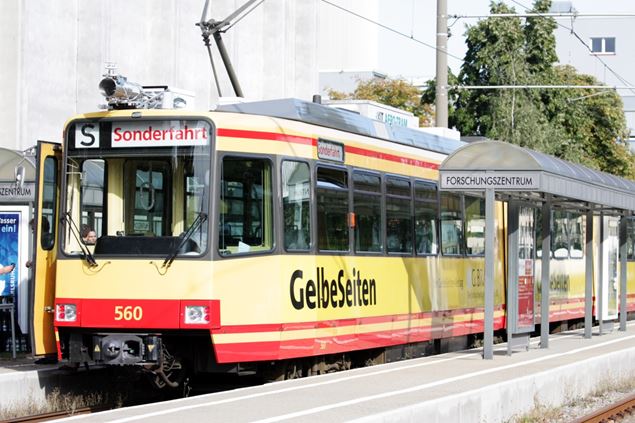Researching Tram - on track of air pollution
How does increasing urbanization and associated increase in traffic affect our habitat and air quality? Particulate matter, nitrogen oxide and ozone frequently cause heated discussions in urban agglomerations.
In order to obtain valid scientific data over long periods, the IMK-TRO in cooperation with the Karlsruher Verkehrsbetriebe GmbH developed the so-called AERO-TRAM. It is a high-tech, mobile research laboratory that allows automated long-term monitoring of O3, NO, NOx, CO, CO2, H2O(g) as well as particulate matter regarding total particle count and particle number distribution.
Special prepared trams shuttled between Karlsruhe city center and the surrounding area 6.200 times. The AERO-TRAM continuously collected high-resolution data: on particulate matter, nitrogen oxides, temperature, humidity, but also on ozone, which forms in connection with exhaust gases. The results of the measurements show, for example, from which wind speeds a lower pollutant load in the city is to be expected. It was found that the high nitrogen oxide and particle values at traffic junctions fall rapidly and sharply when entering the pedestrian zone. In addition, nitrogen oxide concentrations also fall rapidly during the transition from inner city to surrounding area.
For more details, have a look at the ESKP-special topic “Metropolises under pressure (in german)”:
https://themenspezial.eskp.de/metropolen-unter-druck/staedte-erforschen/forschende-strassenbahn/
[Working group: Aerosols, Trace Gases and Climate Processes]

